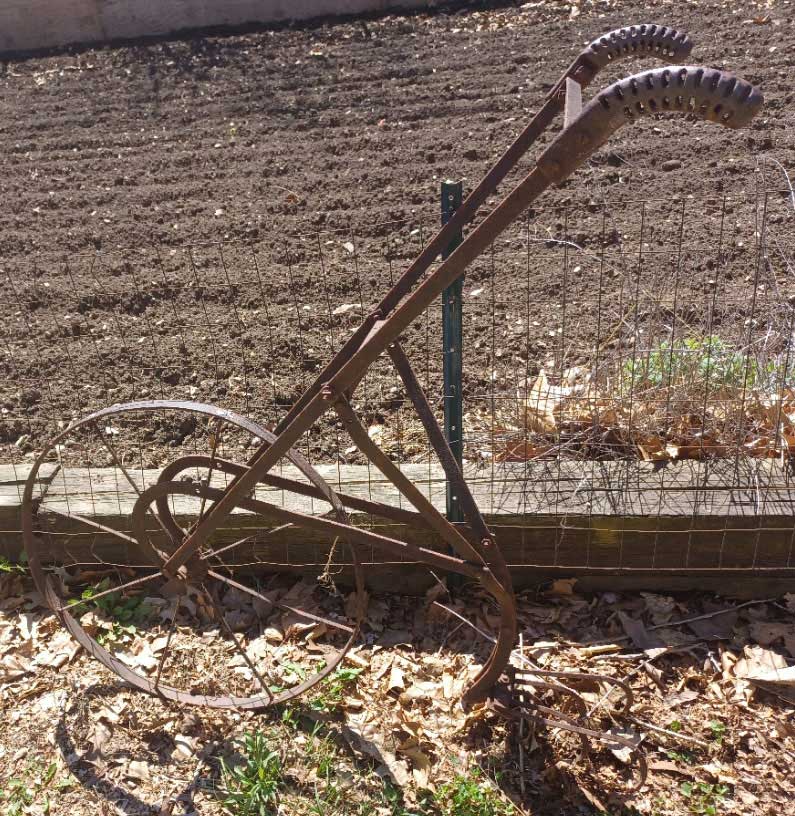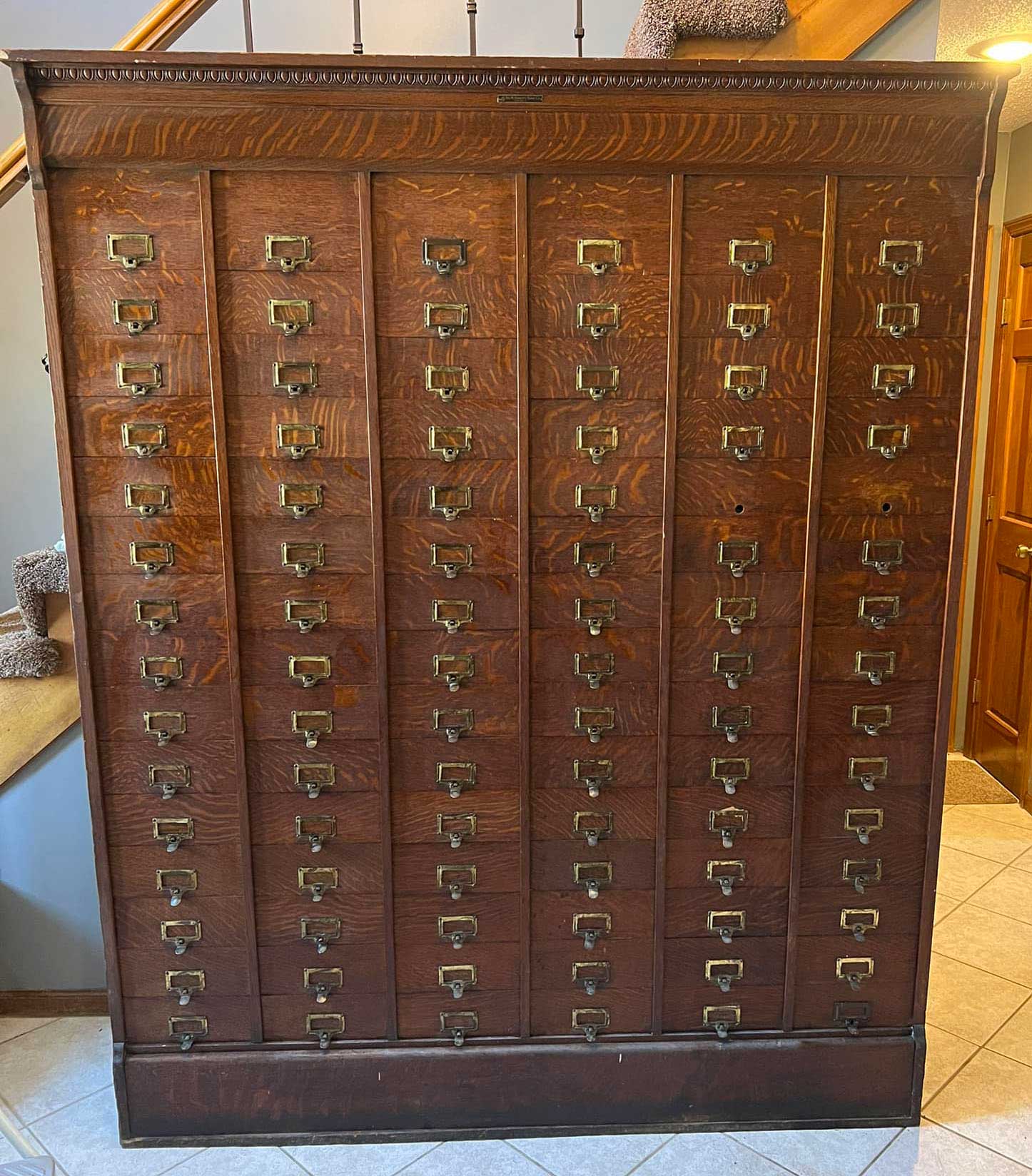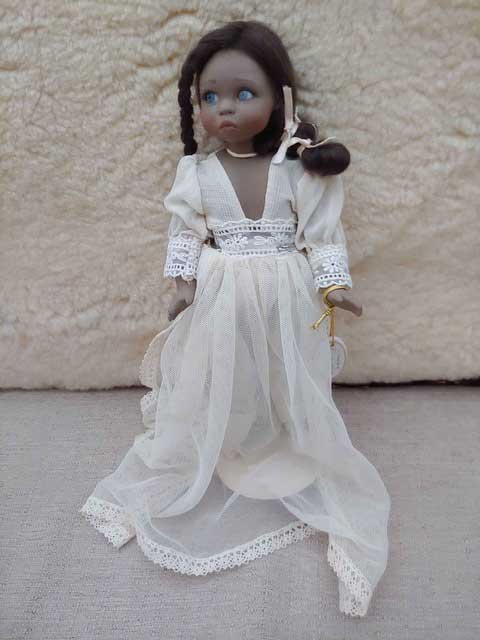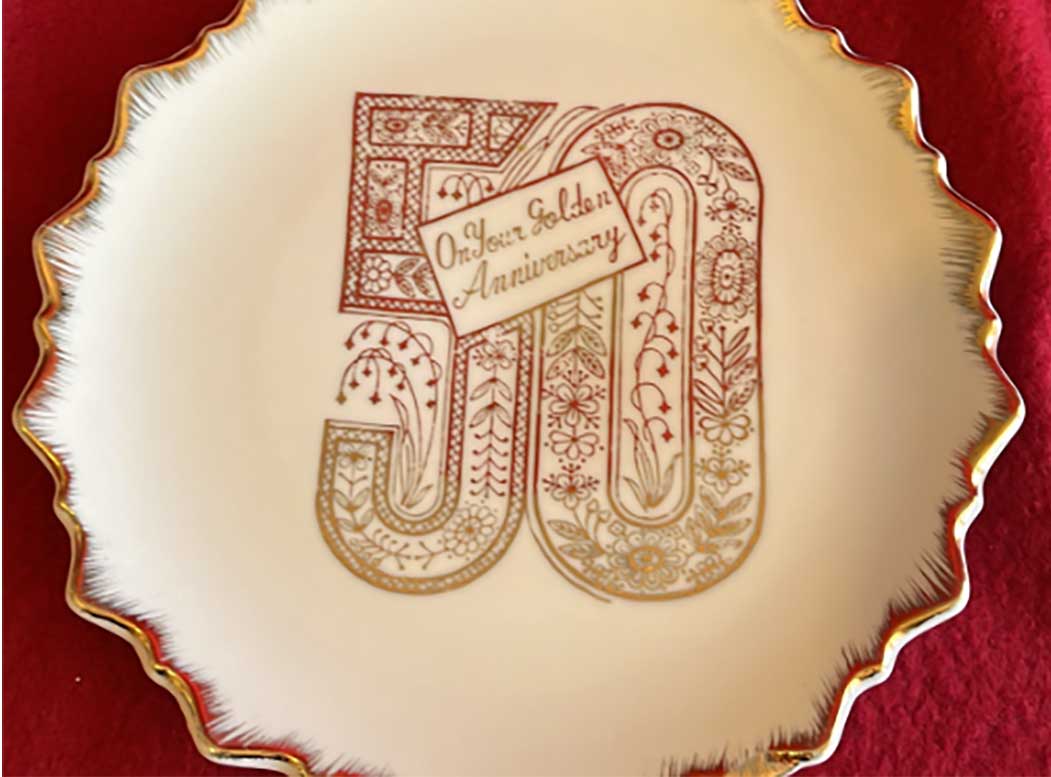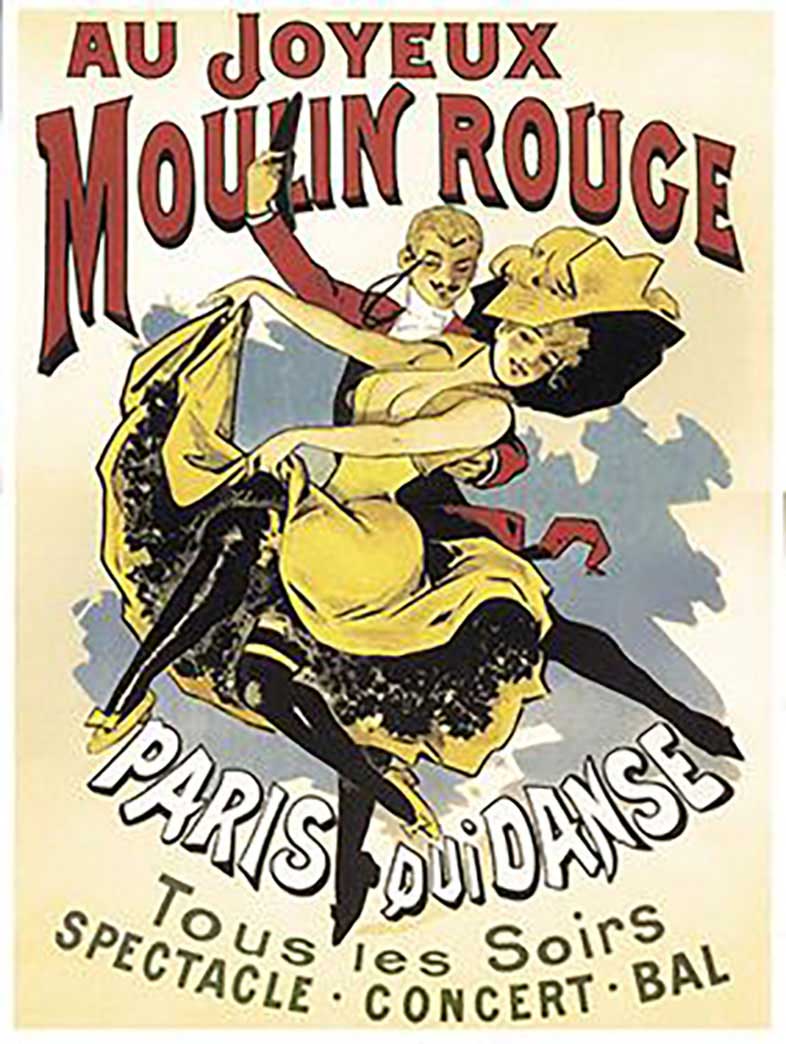A priceless painting found at a garage sale
August 2023
Michelle Knows Antiques
A priceless painting found at a garage sale
by Michelle Staley
Several years ago, I pur-chased a beautiful painting at a garage sale for $3. The scene seemed very familiar, but I didn’t linger on my analysis of the piece. I loved it, paid for my purchases and went on to the next sale.
Later that day, I brought my newly acquired painting into the house, sat down, and gave it a quick once over. The painting is unsigned, so I pulled out all my art-related books to see if I could find the artist who painted the piece, to no avail.
Three months ago, while scanning through my online home page, lo and behold, my painting popped up on the page. Oh my gosh, I have a Rembrandt!
I am one of the few lucky people who found a real treasure at a bargain price. In my head I was already spending the millions of dollars I would get once I sell the piece at auction. I called my father and hus-band. “We are going to be rich,” I said and proceeded to tell them the story behind my amazing find.
I was literally trembling as I gently took the painting down from the office wall to really scrutinize the piece. The painting is of Rembrandt and Saskia, Rembrandt’s wife, in the scene “The Prodigal Son in the Tavern,” circa 1635.
My painting is oil on can-vas, just like the original, and it is about the correct size based on the informa-tion in my resource book.
There are appropriate signs of wear to the front, and it looks to me like someone put new stretcher bars on it. It has contemporary staples holding the canvas in place. I quickly dismissed these minor inconsistencies. A painting of this age probably needed new stretcher bars.
Mine is not signed “F. Rembrandt” like the original, but I was justifying all of this to myself, and I can be pretty convincing when I want to be.
The brain is a powerful instrument. The story I wove around my painting is that Rembrandt had to have painted more than one of this particular scene as a practice run. The one I held in my hands was the true original and that is why it was not signed. It has been rolled up and hidden away in a cedar chest for centuries, just waiting for me to come along and purchase it.
Well, the proverbial bubble eventually burst. I sent photos to a noted auction house to have it evaluated and assured them that I would let them sell it for me and we would all become very wealthy. The conclu-sion was that I own a very well-executed copy of undetermined age, but most likely it was painted in the 20th century. The auction value for my painting is around $200.
Recently while in Texas – that trip was a doozy and the story will be coming soon – I was driving through a neighborhood on big trash pickup day, a gentleman had just placed a beautiful painting on the curb. I immediately hopped out of the car and grabbed it. I took the painting back to the RV and placed it where the sun would not shine on it.
Later that day while sitting in the RV to escape the Texas heat of 104 degrees, I examined my free find. It is a beautiful woman in a blue dress, sitting in a thoughtful pose at a desk, and is signed “D’yf.” It is oil on canvas with an aged backing board. I didn’t have an Internet connection, so I had to use my cell phone to do a bit of research. The results came up as “Claudine and The Red Rose” by Marcel Dyf. My painting has a pink rose, so I am going with that the rose faded over time.
Marcel Dyf (1899 – 1985) was active/lived in France. Dyf is known for landscape, figure, floral still life and seascape painting. He had little formal artistic training but owed much of his inspiration to the great masters of the past such as Rembrandt, whom he particularly admired, Vermeer and Tiepolo.*
Do I have a true Dyf painting? I highly doubt it, but I still need to remove the backing board and take a peek at the canvas. Maybe I will find something mar-velous behind this lovely lady. One can hope.
So, why am I sharing these stories with you? To illustrate the fact that no matter how knowledgeable you are in antiques and collectibles, it is very easy to get caught up in the moment and have all common sense leave the building.
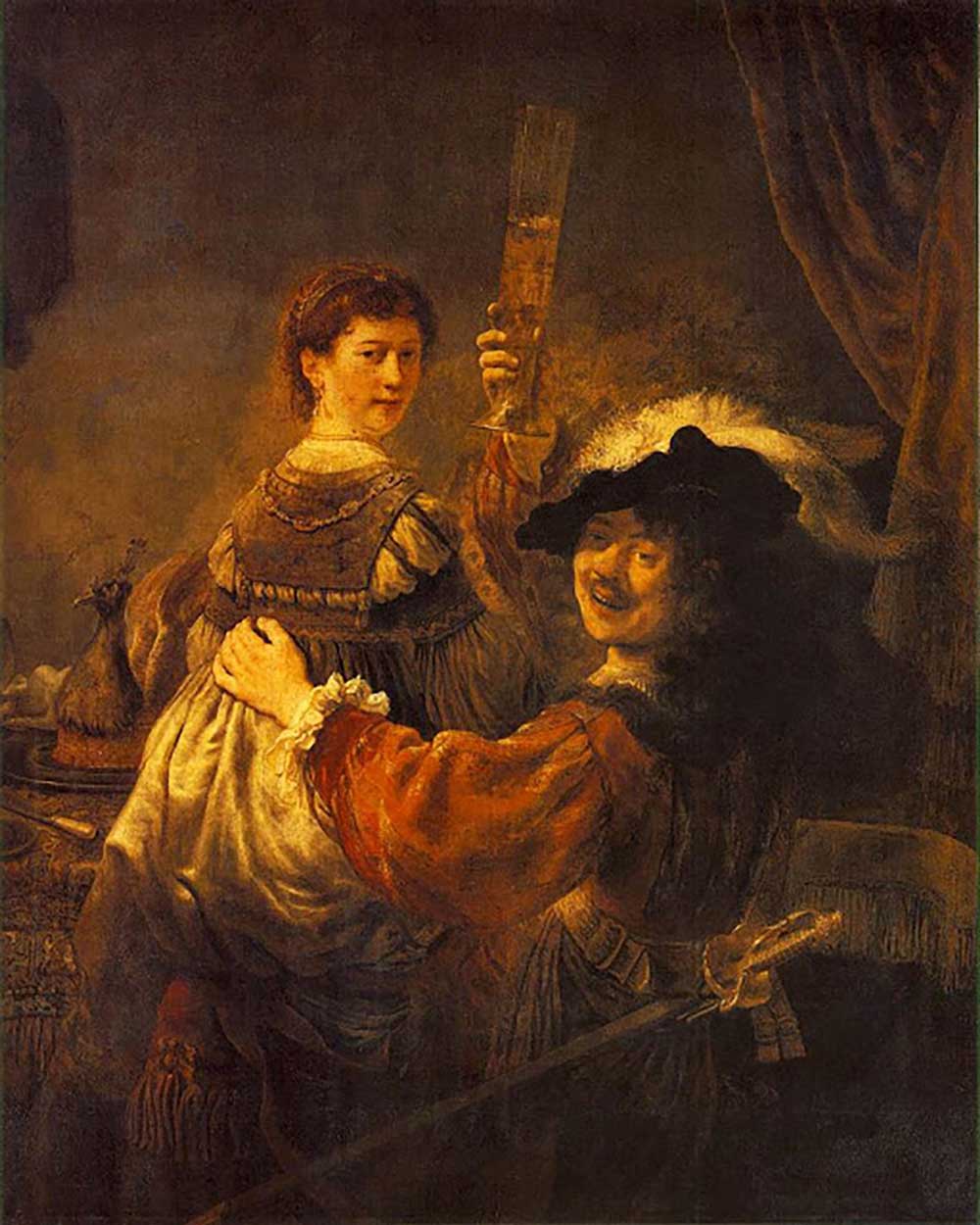
A Rembrandt?
For $3 I became the proud owner of a Rembrandt! I was sure of it, proving even experts can get caught up in the emotion of a great find. Rembrandt and Saskia. (Image courtesy of the author)
Works of art are very easily reproduced. There are companies in operation today that have staff artists who do nothing but copy the works of the masters for resale and most bear no notation that they are repro-ductions. This is not a new industry, and it is often dif-ficult to differentiate the real deal from the reproduction.
You also need to keep in mind that many art museums sell reproductions of original works held in the museum. These pieces are often notated in some fashion to indicate they are reproductions of original works.
With today’s sophisticated printers one can even scan a painting and print it in such a manner that it looks like an actual painting. This is called a “giclee.”
Even if you have an artist-signed painting, etching, engraving or drawing, it does not necessarily mean that you have a valuable work of art. Have you heard of a “starving artist” sale? This type of art sale became popular in the 1970s. They are generally held in hotels or convention centers across the country and advertised as the op- portunity to own an authentic work of art at a dis-counted price. The paintings are usually signed with only a first name or illegible signature and a two-digit date such as “72” for 1972.
The pieces sold at this type of sale are mass produced by artists for the wholesale company putting on the sale. Typical scenes you’ll find are oceanscapes with crashing waves, light-houses, street scenes and still-life paintings.
The value of the paintings on the secondary market depends largely on the sub-ject matter, quality of the piece and the frame, but most sell for less than $50.
Recently I have had an onslaught of appraisals for “paintings” with a label or stamp on the back that says “Intercraft Industries” or “Academy Arts.” From a distance, they look like original works, but when you get close and examine the piece, you notice that it is a print on cardboard with texture added to give the illusion of an oil painting.
The added texture was very appealing to the consumer versus a flat print or lithograph. I have seen some actual acrylic-and-oil paintings on canvas with the same label.
Intercraft Industries was founded in the 1950s or 1960s to bring affordable art to the masses. From what I could find through my research, the company ceased operation in the early 1980s.
If you have a painting, drawing or similar piece of art you think might be of some importance or value, I highly recommend having it examined by someone in person. A local art gallery or art museum can most likely direct you to someone who can analyze the piece and give you some infor-mation.
And as a side note, please consider this: When it comes to works of art, if you are on a budget, purchase pieces you love and support your local art community. You never know if an artist might ascend to the ranks of someone who is known and admired on a national or worldwide level.
Happy 50th anniversary to Discover Vintage America! It has been a real privilege and pleasure to be part of this fabulous publication and family for 10 years. To have a print publication last this long says a lot for the quality of the content and the trust of those who advertise through us. Bruce, now retired, brought me on board knowing that I am not a journalist but was willing to put in the effort to make my rambling columns look professional. That mantle has been hand-ed off to our current editor Corbin and publisher/owner Patti. Thank y’all for letting me be part of this beautiful publication. I don’t leave home without a current copy in the car and now RV. Thanks to all of our advertisers and readers – you are what keep us going strong.
Here’s to another 50 years.
* Artnet.com
*All prices given are for sale in a private sale, antique shop, or other resale outlets. Price is also dependent upon the geographic area in which you are selling. Auction value, selling to a dealer or pawn shop prices are about ½ or less of resale value.
Michelle Staley is a Lenexa, KS-based dealer and researcher with 35 years of experience in the antique trade.
Send questions with photos to Michelle at michelle@discovervintage.com or TXSmichelle@gmail.com. Please keep queries to one question; questions without photos of the item may not be answered. There is no guarantee that your question will be answered or published.
Michelle is also available for consulting and extensive research work beyond this column. If you would like an appraisal on an antique or collectible please go to www.michellesantiqueappraisals.com for a one-on-one appraisal. Please note new web address.


